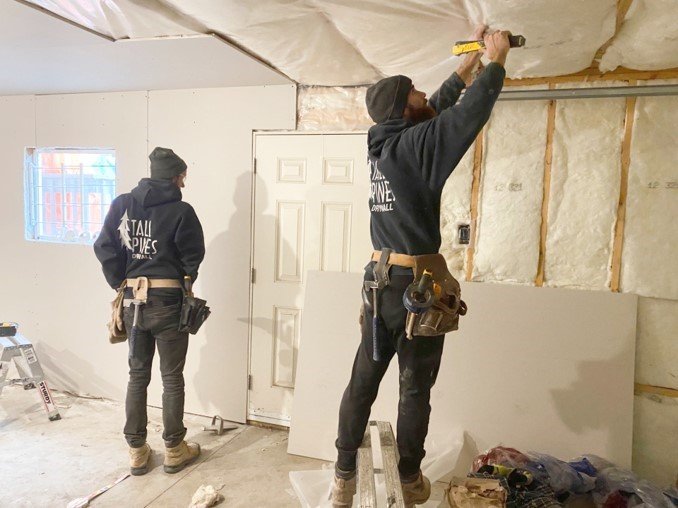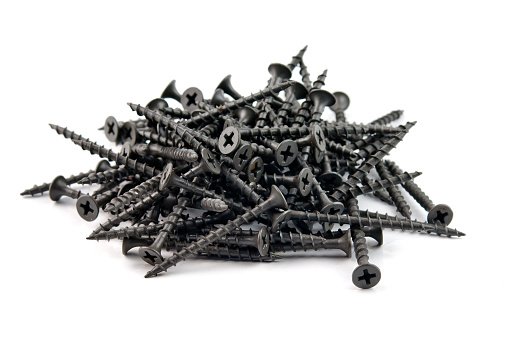Screws or Nails? A Few Things to Consider when Hanging Drywall
Drywall Screws and Nails
Screws and nails and two of the most common wood fasteners when hanging drywall. Drywall screws are more secure when installed properly, but drywall nails are cheaper and (in some areas) easier to install. Here are a few things to consider for deciding which to use and when to use them during your drywall installation project:
Call Tall Pines Drywall in Winnipeg for suspended ceiling installation.
Ceiling Installations
Drywall nails are tough, but for a ceiling installation the safe choice is to be using screws. Screws offer the needed protection to keep drywall in place. This is because of their better holding power, or grip strength. Grip strength refers to screws’ ability to hold down two or more pieces of wood on top of each other.
Tall Pines Drywall contractors doing a residential project in Winnipeg, Manitoba.
Wall Installations
For wall installations, drywall screws are just as effective as drywall nails – and more cost effective! Something to consider: building codes can require up to double the amount of nails as screws. This makes screws seem like the better option, right? If you factor in the cost of getting a nail gun which is required to install drywall screws, you might just want to go with the good old fashioned hammer and nails.
Drywall popping… we make sure this doesn’t happen to you.
Nail Lengths
There is very little room for error when choosing a drywall screw or nail. You don’t want to go under the recommended length of either. To reduce the risk of popping (see picture above), make sure your screws and nails have a ring shank variety for an increased hold and all around better security.
Drywall screws should only penetrate the wood 5/8 to 3/4 inch, meaning your nails or screws should be at least 1 1/4 inches long when installing 1/2 inch drywall
3/4 inch drywall calls for a slightly longer nail (1 1/2 inches) and screw (1 3/8 inch)
Successful Installation Tips
Embed the head of the nail or screw slightly deeper than the surface of the drywall
Hammers have a slightly rounded head specifically to make this task easier
With nails, there is a slight dimple around the head
With screws get the head 1/32 of an inch below the surface of the drywall to create a slight indentations
The indents and dimples you create will be filled with joint compound and be smoothed over
If you bend a nail while hammering, it is recommended you pound the entire nail into the drywall surface rather than trying to pry it out
Standard drywall screws
At the end of the day, both nails and screws get the job done, it all depends on your drywall project. The most important factor in your decision should be what will provide the strongest and longest lasting hold.
We know this is easier said than done – drywall finishing is harder than it looks. If you are in Winnipeg, Manitoba or surrounding areas, give us a call at Tall Pines Drywall and request a free quote. With over 25+ years of experience our professional drywall contractors look forward to will making your vision a reality.





